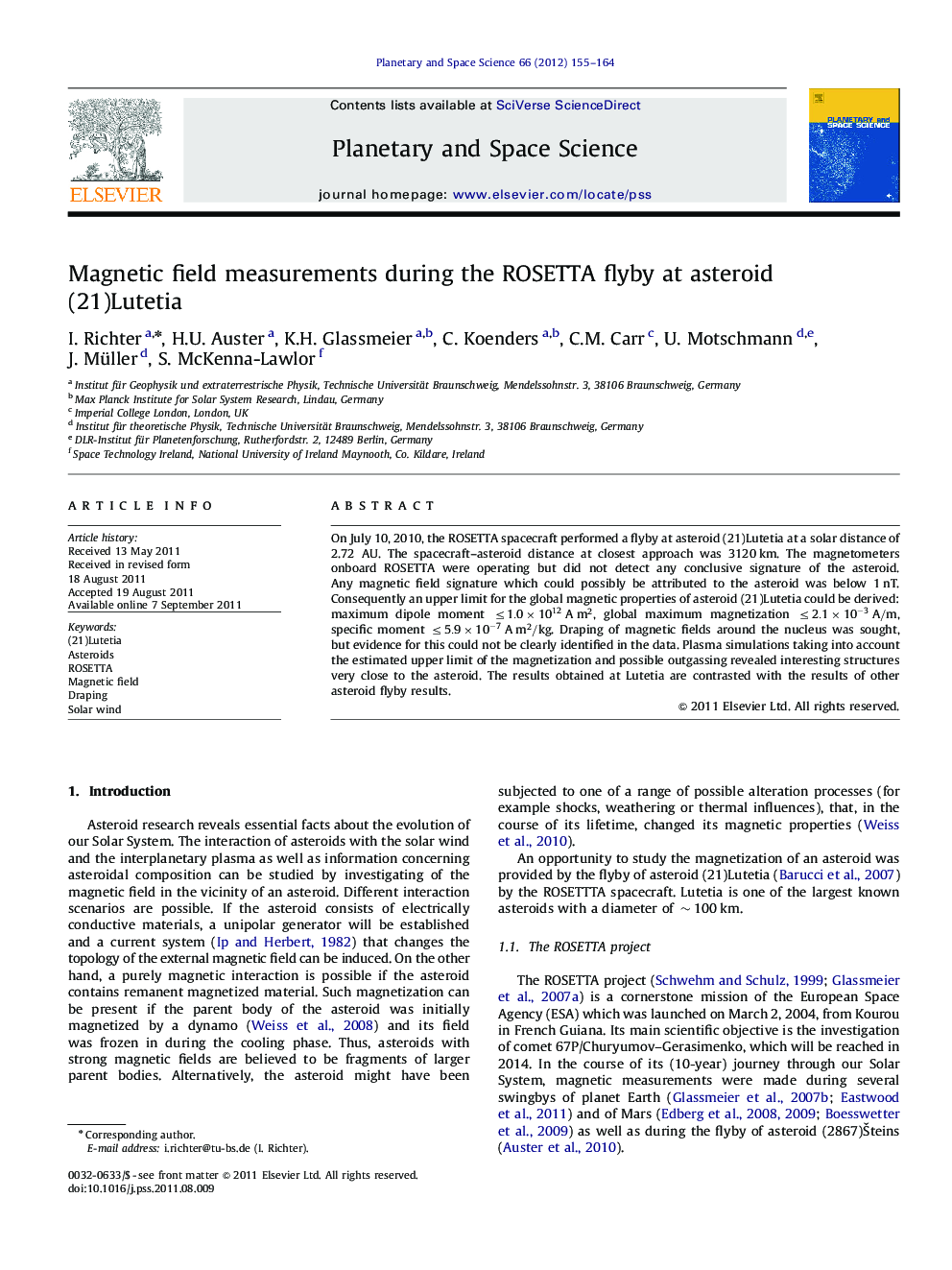| Article ID | Journal | Published Year | Pages | File Type |
|---|---|---|---|---|
| 1781491 | Planetary and Space Science | 2012 | 10 Pages |
On July 10, 2010, the ROSETTA spacecraft performed a flyby at asteroid (21)Lutetia at a solar distance of 2.72 AU. The spacecraft–asteroid distance at closest approach was 3120 km. The magnetometers onboard ROSETTA were operating but did not detect any conclusive signature of the asteroid. Any magnetic field signature which could possibly be attributed to the asteroid was below 1 nT. Consequently an upper limit for the global magnetic properties of asteroid (21)Lutetia could be derived: maximum dipole moment ≤1.0×1012Am2, global maximum magnetization ≤2.1×10−3A/m, specific moment ≤5.9×10−7Am2/kg. Draping of magnetic fields around the nucleus was sought, but evidence for this could not be clearly identified in the data. Plasma simulations taking into account the estimated upper limit of the magnetization and possible outgassing revealed interesting structures very close to the asteroid. The results obtained at Lutetia are contrasted with the results of other asteroid flyby results.
► Magnetic field measurements during the ROSETTA flyby at asteroid (21)Lutetia. ► The observed magnetic field signature of Lutetia was below 1 nT at 3120 km distance. ► Measurements and theoretical considerations lead to an upper limit for the magnetization of 1012 A m2. ► Plasma simulations of asteroid (21)Lutetia including magnetization and outgassing are presented. ► The Lutetia results are compared with other asteroid flyby results.
